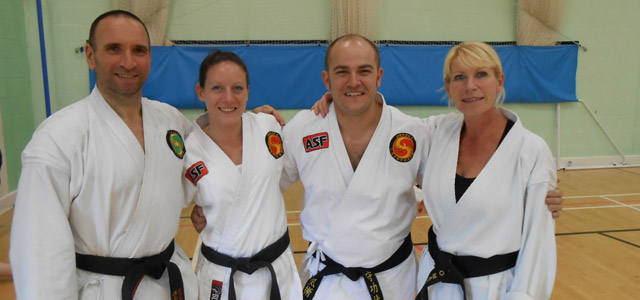Kata
Kata are exercises performed individually and consist of sequences of techniques in different directions, with perhaps 20 to 40 techniques within each sequence (or kata). Regularly practising kata gives the individual a chance to improve their posture, power, precision, focus, speed and intent/zanshin. ASF actively encourage regularly practicing Kata in order to improve their martial arts skills.
Three Important Elements of Kata
1. The application of strength at the correct stance.
2. The control of speed in and between techniques.
3. The smooth transition of the body from one technique to the next.
Kumite (Sparring) Training
Kumite is usually translated as “sparring.” There are many types of kumite. Some involve basic techniques, some are free techniques and others may not involve actual techniques at all. The idea is to give you a more realistic approach by allowing you to train with other people rather than just imaginary opponents.
Kihon-sanbon kumite – Three-step basic sparring
This is usually the first type of sparring introduced to martial arts beginners. The main idea is to repeat movements, to get students used to the basic techniques. (Traditionally, only punches are practised as attacks in this type of sparring). This is basic sparring, therefore the primary emphasis should be on proper form and technique.
Kihon-ippon kumite – One-step basic sparring
This is similar to Kihon-Sanbon Kumite, but involves only one step forward by the attacker. The attacks may also include a few basic kicks and the defender is allowed a bit more movement. With all basic sparring, the attacker announces the attack, but the defender is allowed to change the block and counter, as long as it is done in basic form.
Jiyuu-ippon kumite – Semi-free sparring
Semi-free sparring usually involves the same techniques as Kihon-Ippon Kumite, but the attacker and defender are allowed to move around until the required technique has been defended and countered.
Jiyuu kumite – Free sparring
The attacker does not call out the intended target or type of attack and, in most cases, both people are allowed to attack at any time. This is for those who are more experienced within the martial art and who have at least a basic understanding of kumite.
